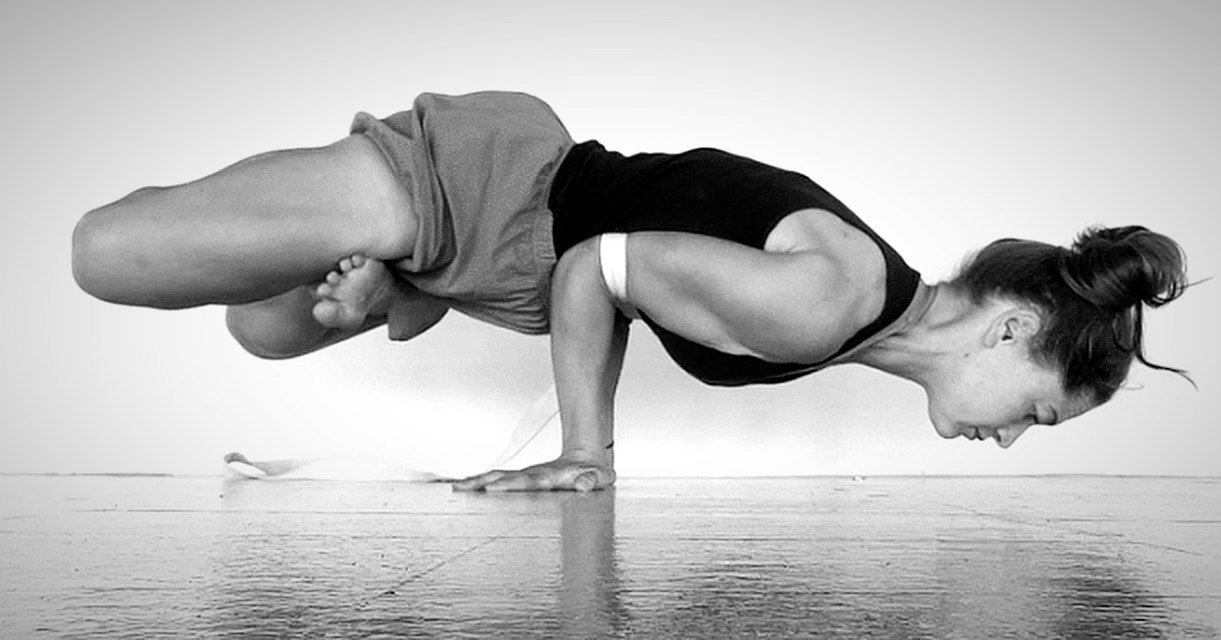|
The introduction to Yoga Philosophy course separated out the 8 different branches of ashtanga yoga for deeper consideration.
Now let's link them back together again and view yoga as a holistic system through the lens of the branch we practise in Iyengar Yoga, the Yoga Asanas (branch 3) Yoga is self-study, (self-study remember is Svadhyaya, one of the Niyamas, branch 2) In Asanas we observe our physical bodies. We do an action, then we observe the reaction. For example, if we grip our outer hip sockets in, we feel an internal lift at the groins. A beginner may not be able to feel or understand this action, so may just start by learning where their outer hip sockets are. As we advance in our yoga practice, we become more knowledgeable, more awake, more sensitive, and more conscious to our physical bodies and unconscious habits. We experience the poses acting on our bodies at a deeper level, on the muscles, bones, tissues, our internal functioning, and at an energetic level. The Asanas are deeply therapeutic. As we advance, over the months and years, we develop a deeper level of awareness with ourselves, a deeper level of self-study. We don't necessarily become more ambitious or advanced in the types of poses we practice; we accept that a younger body will be able to do more than an older body. We will undoubtedly develop strength, stability, and flexibility, but this isn't the goal. Rather these are the necessary tools we need in order to achieve the goal. The goal is deep awareness, deep self-study. We need to build the stability and stamina in the body because the longer we can hold a pose without strain, the longer we can observe ourselves at a more subtle level & learn. As a beginner, we may be able to hold a pose for 30 seconds before the body becomes unstable. As the body starts to fade and strain, the mind becomes unsettled. Once the breath becomes ragged and we start pushing it stops being Yoga. But as we advance in our practice, we might be able to hold a pose for up to 8 minutes, giving us much more time to observe the reactions in the body, the sensations in the body, what comes up in the mind and how the mind responds. Similarly, the mind of a beginner can be unrefined, impatient, scattered, distracted, or aggressive. We can't hold focus for long. We start thinking about what’s happening after class, or how long we have to hold the pose, or we start pushing with our ego trying to force our head to our shin, or copying our neighbour rather than responding to your own body. In the final pose of savasana (a form of pratyahara, and dharana - branches 5 and 6) it may feel impossible for a beginners to be still for more than 1 min. Its understandable if total beginners lie there thinking about distractions, rather than observing themselves and staying present. They may get bored, impatient or fall asleep. Advanced yogis can stay in savanasana for 10 -15 minutes in a state of relaxed concentration, completely present and aware but passive and relaxed. As our sensitivity and ability to rigorously observe ourselves develops it is important we remember the yamas and the niyamas ( values and behaviours, branches 1 &2 ) that must underpin HOW we do our Asanas, (poses, branch 3) & pranayama (breath work, branch 4). We should strive to follow the following Yamas and Niyamas in our practice:
Namaste Kate This is lesson 8 of a free yoga philosophy course, click here for the full free Introduction to Yoga Philosophy course. Comments are closed.
|
BlogYoga with Kate Stannard
�
Archives
September 2023
Categories |





